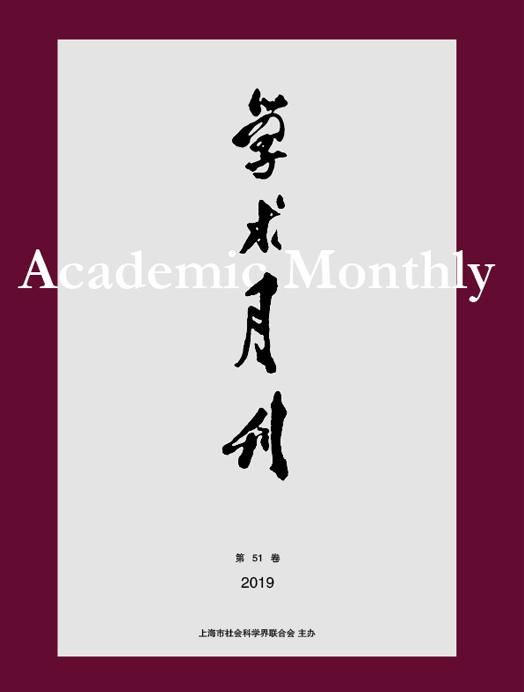Citation:
Jinhai LIU. Elements, Mechanism and Pattern of National Growth[J]. Academic Monthly, 2020, 52(9): 74-83.

Elements, Mechanism and Pattern of National Growth
-
Abstract
In the research of “returning to the country” since 1980s, “national growth” is a new theme, which means the dual innovation of national theory in methodology and theory. From the perspective of political ecology, the growth of a country is first manifested in the growth of national elements. The elements of national growth are divided into basic elements, organizational elements and growth mechanism. The basic elements establish the country. With the development of the basic elements, the growth of the organizational elements is the main performance of the national adjustment period, and the formation of the development means that the country enters a stable period. When the growth mechanism germinates and gradually becomes the mainstream of political life, the growth of the country enters a mature period. In different periods of national growth, the source power comes from the society, so the state-social relationship mechanism is the most important. Different social forms and development processes lead to different ways of combining the state and society, and the growth of a country presents an unbalanced pattern (the same is true of the international community). The theory of state growth not only challenges the existing state theory, but also expands the logic, method and field of state research. Based on the theory of state growth, the relationship between state and society needs to be reexamined. Especially in the post state growth period, society will enter into an interconnected community, and our goal is to promote the construction of a community with a shared future for mankind.
-

-
References
-
Access
-
-
[1]
Shuangli ZHANG
. Rethinking Karl Marx’s Theory of Civil Society. Academic Monthly,
2020, 52(9): 15-27.
-
[2]
Zhonghua GUO
, Yikun CHEN
. Geographical Imaginations in the Process of Chinese Modern State-Building. Academic Monthly,
2021, 53(9): 203-216.
-
[3]
Cheng GU
, Guoning SUN
. A New Look at International Tax Competition in Modern State Governance. Academic Monthly,
2020, 52(1): 62-72.
-
[4]
. . Academic Monthly,
2017, 49(08): 88-97.
-
[5]
. . Academic Monthly,
2017, 49(10): 81-92.
-
[6]
Congxue DUAN
. “Highway” as the Central Image in Literature in KMT Controlled Rigions and the Genesis of “National Sense of Community”. Academic Monthly,
2019, 51(7): 128-137.
-
[7]
. Temple as Axis: “Modern” and “Country” in Village from 1920s to 1940s. Academic Monthly,
2018, 50(04): 163-178.
-
[8]
Hongming WANG
. Work Teams: Chinese Experience in Modernizing State Governance. Academic Monthly,
2021, 53(3): 85-98.
-
[9]
Youwen ZHANG
. Mechanism Change and Structure Transformation in World Economy under Factor Flow. Academic Monthly,
2020, 52(5): 39-50.
-
[10]
DU Yushen
. . Academic Monthly,
2018, 50(8): 53-68.
-
[11]
Puqu WANG
, Bin TANG
. The Three Dimensions of Production Mechanism of National Governance Capacity. Academic Monthly,
2019, 51(4): 65-72, 120.
-
[12]
Zhenghan CAO
, Pei ZHONG
, Jing NIE
. The Modernization of the Junxian State: How Does the Chinese Central Government Expand Its Function of Governance in Public Affairs. Academic Monthly,
2021, 53(9): 95-112.
-
[13]
Huping SHANG
. The Endogenous Risks of the Bureaucratic Organization and their Prevention and Control during the National Governance Modernization. Academic Monthly,
2022, 54(1): 83-97.
-
[14]
Jitong LIU
. The Social Construction of “Social Welfare Consensus” in China and the Goal of Modern Socialist Welfare State. Academic Monthly,
2022, 54(6): 73-84.
-
[15]
Zhijun YANG
. Central Cohesive - Local Closed Policy System and Its Renewal: The Political Resource Reconstruction of National Governance Modernization. Academic Monthly,
2022, 54(1): 98-111.
-
[16]
,
. . Academic Monthly,
2016, 48(08): 71-80.
-
[17]
Zhixiang JIAN
, Rong MA
. Language, Construction of Nation-state, and Language Policy. Academic Monthly,
2022, 54(9): 123-147.
-
[18]
. . Academic Monthly,
2016, 48(03): 66-79.
-
[19]
Xingjiu ZHANG
. The View of “State” in Action. Academic Monthly,
2021, 53(8): 67-78.
-
[20]
Shiping TANG
, Ling GAO
, Li LI
, Yichao LU
. State Capacity: Out of Theoretical Wilderness. Academic Monthly,
2022, 54(11): 68-83.
-
-




 沪公网安备 31010102003103号
沪公网安备 31010102003103号 DownLoad:
DownLoad: